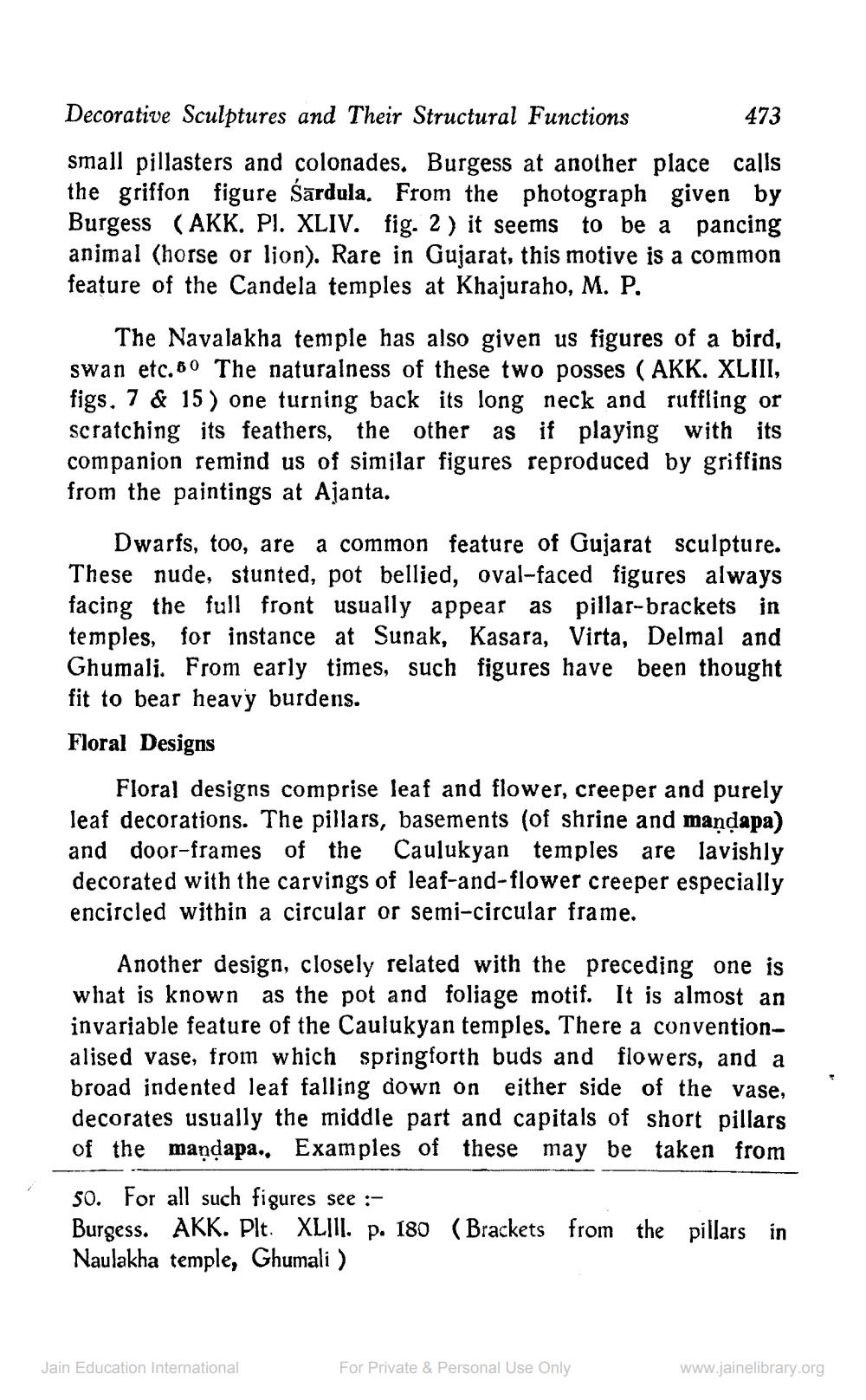________________
Decorative Sculptures and Their Structural Functions
473 small pillasters and colonades. Burgess at another place calls the griffon figure śārdula. From the photograph given by Burgess (AKK. Pl. XLIV. fig. 2) it seems to be a pancing animal (horse or lion). Rare in Gujarat, this motive is a common feature of the Candela temples at Khajuraho, M. P.
The Navalakha temple has also given us figures of a bird, swan etc.60 The naturalness of these two posses ( AKK. XLIII, figs. 7 & 15) one turning back its long neck and ruffling or scratching its feathers, the other as if playing with its companion remind us of similar figures reproduced by griffins from the paintings at Ajanta.
Dwarfs, too, are a common feature of Gujarat sculpture. These nude, stunted, pot bellied, oval-faced figures always facing the full front usually appear as pillar-brackets in temples, for instance at Sunak, Kasara, Virta, Delmal and Ghumali. From early times, such figures have been thought fit to bear heavy burdens.
Floral Designs
Floral designs comprise leaf and flower, creeper and purely leaf decorations. The pillars, basements (of shrine and mandapa) and door-frames of the Caulukyan temples are lavishly decorated with the carvings of leaf-and-flower creeper especially encircled within a circular or semi-circular frame.
Another design, closely related with the preceding one is what is known as the pot and foliage motif. It is almost an invariable feature of the Caulukyan temples. There a conventionalised vase, from which springforth buds and flowers, and a broad indented leaf falling down on either side of the vase, decorates usually the middle part and capitals of short pillars of the maņdapa.. Examples of these may be taken from 50. For all such figures see :Burgess. AKK. Plt. XLIII. p. 180 (Brackets from the pillars in Naulakha temple, Ghumali )
Jain Education International
For Private & Personal Use Only
www.jainelibrary.org




